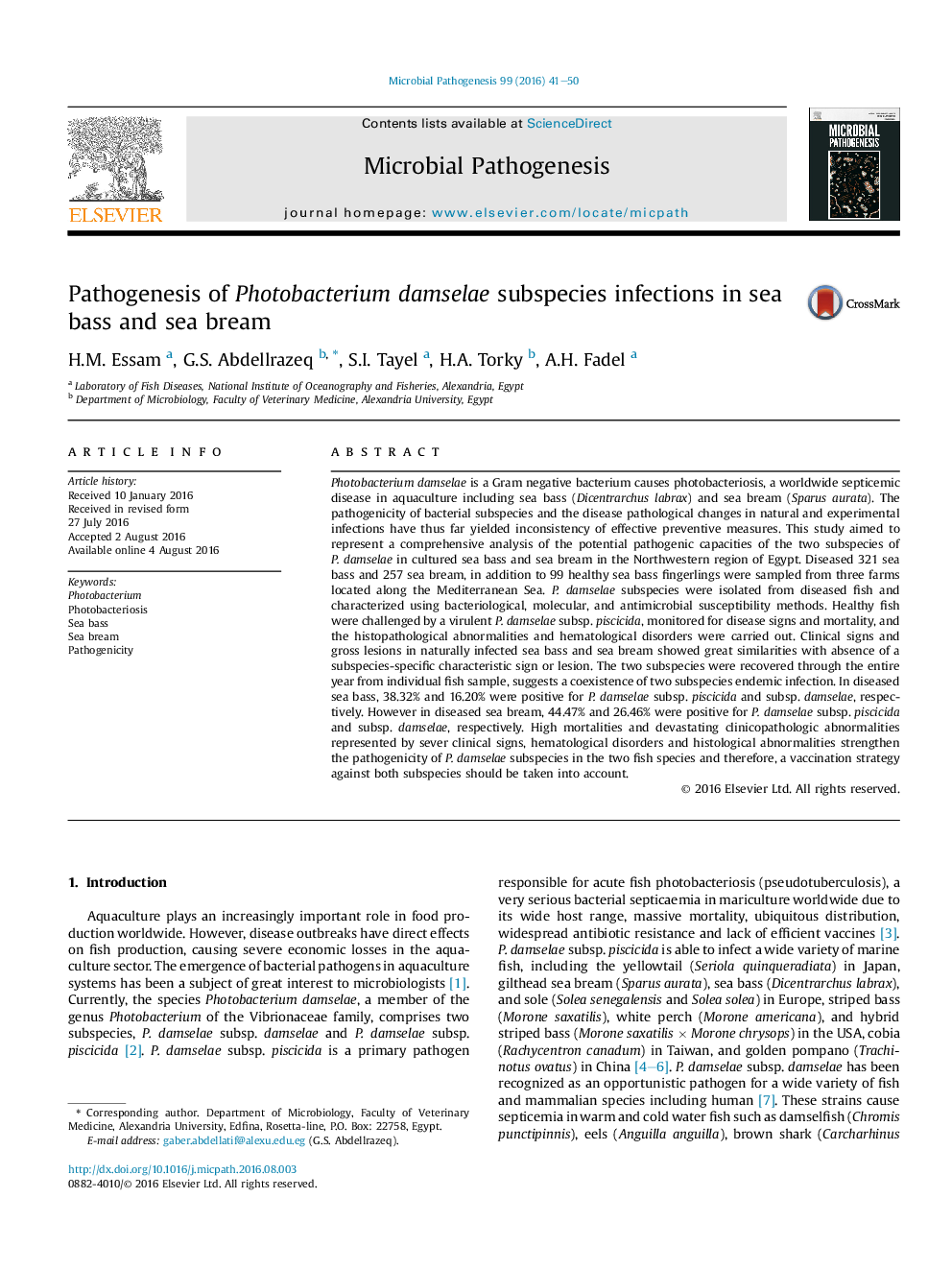| Article ID | Journal | Published Year | Pages | File Type |
|---|---|---|---|---|
| 3416266 | Microbial Pathogenesis | 2016 | 10 Pages |
•The study described the potential pathogenic capacities of Photobacterium damselae subspecies.•This is a comprehensive report on cultured sea bass and sea bream in the Egypt's Northwest.•Diseased sea bass and sea bream showed no subspecies-specific characteristic sign or lesion.•Results suggest a coexistence of two subspecies – endemic infection.•High mortalities and devastating clinicopathologic abnormalities strengthen the pathogenicity of P. damselae subspecies.
Photobacterium damselae is a Gram negative bacterium causes photobacteriosis, a worldwide septicemic disease in aquaculture including sea bass (Dicentrarchus labrax) and sea bream (Sparus aurata). The pathogenicity of bacterial subspecies and the disease pathological changes in natural and experimental infections have thus far yielded inconsistency of effective preventive measures. This study aimed to represent a comprehensive analysis of the potential pathogenic capacities of the two subspecies of P. damselae in cultured sea bass and sea bream in the Northwestern region of Egypt. Diseased 321 sea bass and 257 sea bream, in addition to 99 healthy sea bass fingerlings were sampled from three farms located along the Mediterranean Sea. P. damselae subspecies were isolated from diseased fish and characterized using bacteriological, molecular, and antimicrobial susceptibility methods. Healthy fish were challenged by a virulent P. damselae subsp. piscicida, monitored for disease signs and mortality, and the histopathological abnormalities and hematological disorders were carried out. Clinical signs and gross lesions in naturally infected sea bass and sea bream showed great similarities with absence of a subspecies-specific characteristic sign or lesion. The two subspecies were recovered through the entire year from individual fish sample, suggests a coexistence of two subspecies endemic infection. In diseased sea bass, 38.32% and 16.20% were positive for P. damselae subsp. piscicida and subsp. damselae, respectively. However in diseased sea bream, 44.47% and 26.46% were positive for P. damselae subsp. piscicida and subsp. damselae, respectively. High mortalities and devastating clinicopathologic abnormalities represented by sever clinical signs, hematological disorders and histological abnormalities strengthen the pathogenicity of P. damselae subspecies in the two fish species and therefore, a vaccination strategy against both subspecies should be taken into account.
